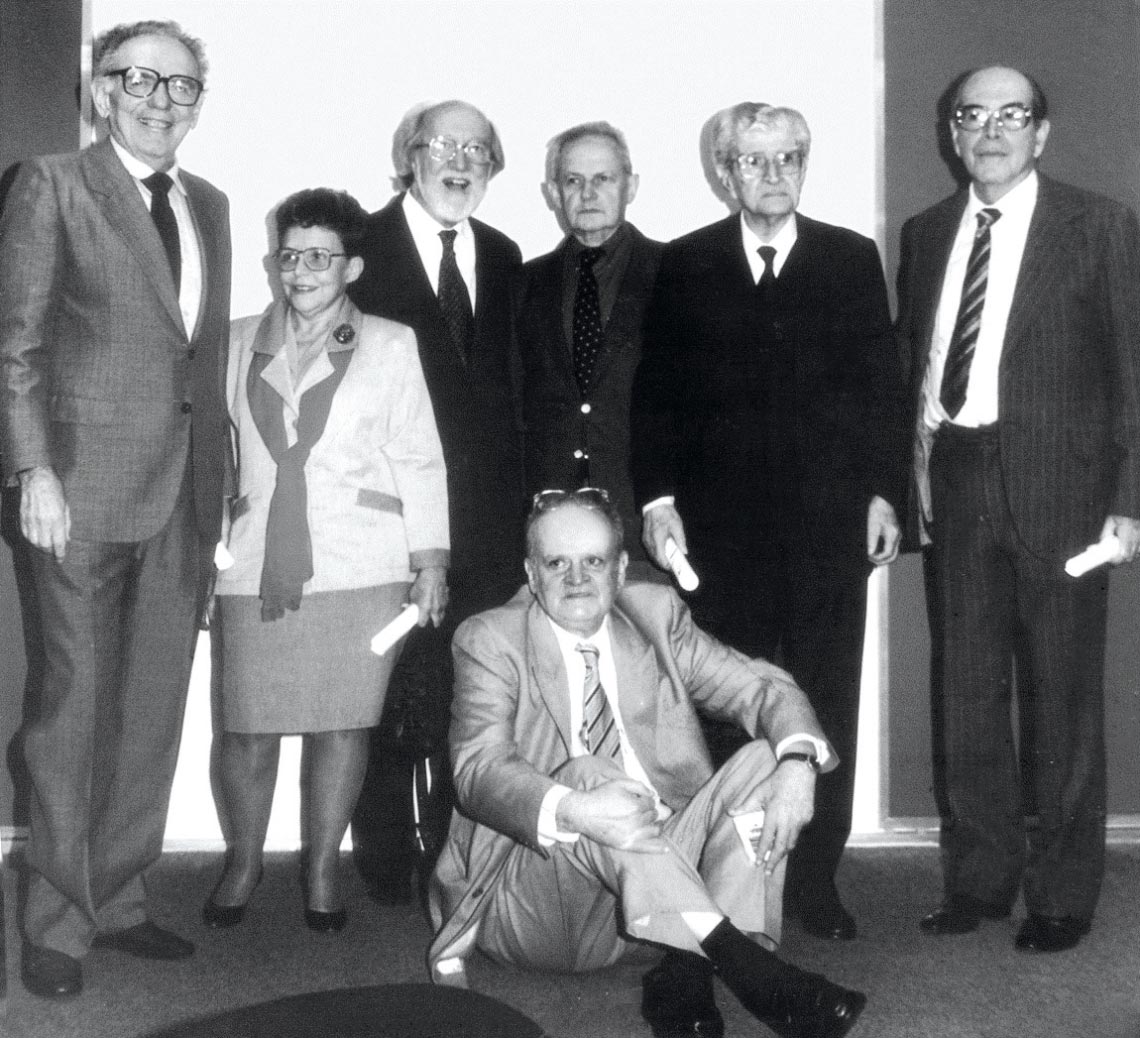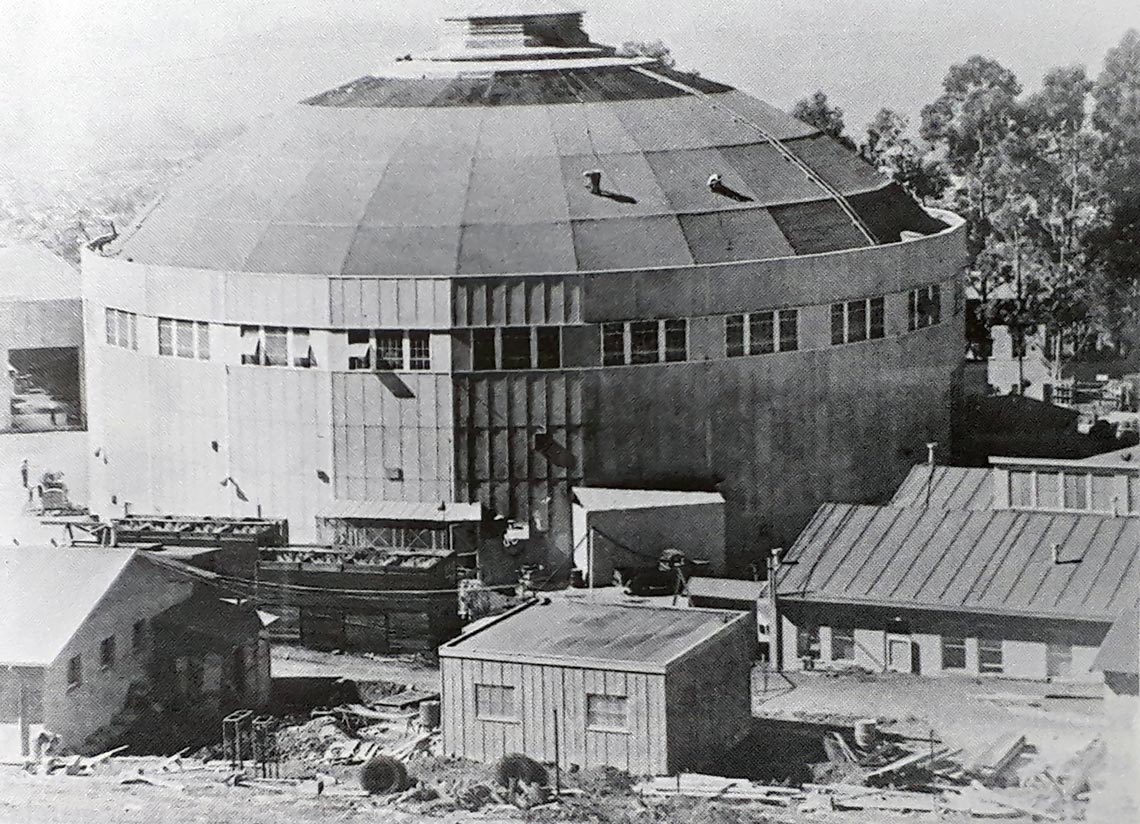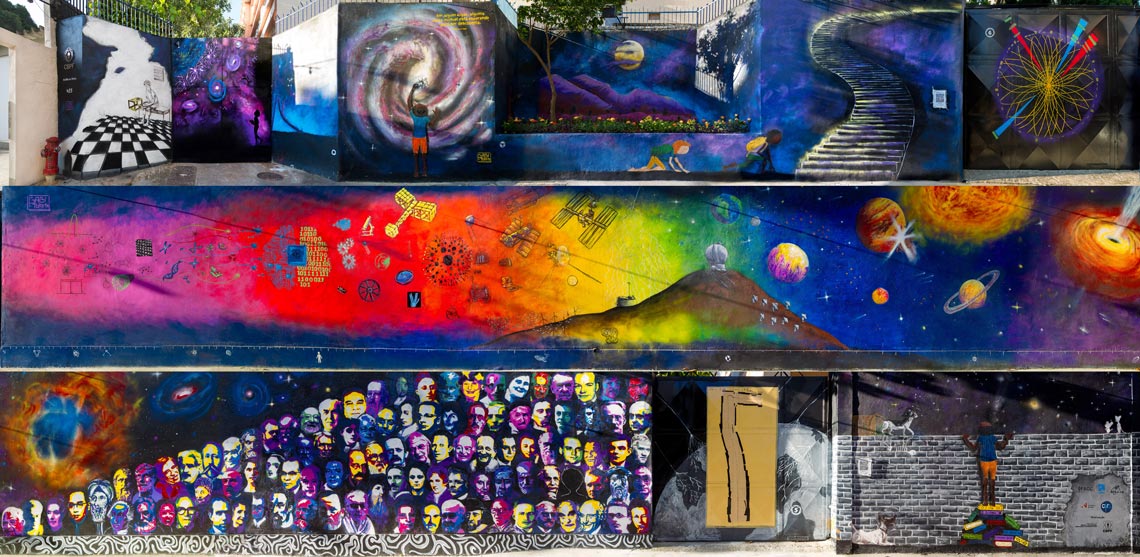In the 1940s, physics enjoyed less prestige in Brazil than it did in the US and Europe, where its influence on literature and science fiction had created in the public mind an association between physics and all things related to progress. The only exception in Brazil was São Paulo, where physics education and research had flourished since the 1930s at the then newly created University of São Paulo (USP). Inspired by what their southern neighbors had achieved, physicists and mathematicians at the National School of Philosophy (FNFi) started a movement to create a high-caliber institution for physics education and research in Rio de Janeiro. This initiative led to the foundation of the Brazilian Center for Physics Research (CBPF).
CBPF opened in January 1949, amid a period of dramatic geopolitical change. In the wake of World War II (1939–1945), the bombing of Hiroshima and Nagasaki, and the outbreak of the Cold War, science had come to be regarded, particularly in the US, as an important means for achieving a nation’s strategic ambitions, a tool for securing political and economic power.
USP had been founded years earlier in 1934, hiring foreign scientists to create and lead departments in various fields. Among them was a Ukrainian physicist residing in Italy, Gleb Wataghin (1899–1986), who played an instrumental role in introducing modern physics research in Brazil. Under his leadership, within a few years the Department of Physics at USP had acquired international renown with his studies on cosmic rays.

CBPF Archive
Some of the most prominent founders of CBPF (from left): Jayme Tiomno, Elisa Frota-Pessôa, José Leite Lopes, Leopoldo Nachbin, Francisco de Oliveira Castro, Hervásio de Carvalho, and Cesar Lattes (seated)CBPF ArchiveIn Rio, then the capital of Brazil, the situation was very different. The Physics Department at FNFi, linked to the University of Brazil (now the Federal University of Rio de Janeiro – UFRJ), had no more than 10 students. “It took tenacity to study physics in Rio,” says historian Ana Maria Ribeiro de Andrade, a retired researcher at the Museum of Astronomy and Related Sciences (MAST). Career prospects as a professor were less than promising, and Brazilian industry had little demand for scientific research.
But physicist José Leite Lopes (1918–2006) of FNFi was encouraged by the quality of research that the Wataghin group had produced at USP. He had worked at USP in 1943, where he met Wataghin and became friends with two other young physicists: Mário Schenberg (1914–1990) and Cesar Lattes (1924–2005). The following year, Leite Lopes went to Princeton for doctoral studies. Upon returning to Rio, he began campaigning among professors, politicians, military officials and business leaders to establish an institution fully dedicated to scientific research, providing an intellectual environment similar to one Wataghin had created in São Paulo.
“Leite Lopes tried from many angles to break into the University of Brazil’s bureaucratic structure and open the way for the creation of a physics research center in Rio,” says historian of science Antonio Augusto Passos Videira, an associate professor in the Department of Philosophy at Rio de Janeiro State University (UERJ), and a member of CBPF. Most professors were opposed to the notion of a dedicated research institution. “The new system seemed less attractive because it meant professors would need to spend time both lecturing and in research, preventing them from pursuing other professional interests outside the university,” explains Ribeiro de Andrade.

CBPF Archive
An outside view of the accelerator where Lattes and Eugene Gardner identified artificially created pi mesons in 1948. The feat received worldwide media acclaimCBPF ArchiveIn another attempt to introduce physics research at FNFi, Leite Lopes invited Lattes to transfer to the University of Brazil. In 1947, 23-year-old Lattes already enjoyed international recognition as a scientist. He made headlines at the University of Bristol when in May that year he successfully identified pi mesons—subatomic particles that had been predicted in 1935 by Japanese physicist Hideki Yukawa (1907–1981). The discovery was made after Lattes exposed photographic plates to cosmic rays atop Mount Chacaltaya, in Bolivia, to detect highly charged particles.
A year later Lattes transferred from Bristol to the University of California, Berkeley, to work on the 184-Inch Synchrocyclotron, the most powerful particle accelerator at the time. “His goal was to find pi mesons among the particles produced by accelerator collisions,” says Videira. “Lattes and Eugene Gardner [1913–1950] found the pi meson two weeks after the Brazilian arrived.” It was the first time that scientists had produced a particle in a laboratory setting that until then was only known to occur in cosmic radiation.
The experiments garnered extensive coverage in the Brazilian and international media. Leite Lopes saw this as an opportunity, and proceeded to pull a complex set of strings in a renewed attempt to create the physics center in Rio. He first approached Nelson Lins de Barros (1920–1966), who worked at the Brazilian consulate in Berkeley and was the brother of ambassador João Alberto Lins de Barros (1897–1955), an influential politician. Nelson had become friends with Lattes when in the United States and introduced him to his brother, who was enthusiastic about his work and the possibility of using nuclear energy in Brazil.

CBPF Archive
Lattes and Eugene GardnerCBPF ArchiveThe coming together of Leite Lopes, Lattes, and João Alberto finally culminated in the foundation of CBPF on January 15, 1949. Euvaldo Lodi, chairman of the National Confederation of Industry (CNI), and João Alberto provided funding for the project during its first months of operation. The center was initially located in rented office space on Avenida Presidente Vargas. Months later it was transferred to a building in Cinelândia, a district also in downtown Rio.
Lattes resigned from USP and became scientific director of the new institution. Over time, the facilities grew inadequate for the experimental research being conducted at the center.
“It was agreed that CBPF would be moved to a newly constructed building on the campus of the University of Brazil near Morro da Urca, on the south side of Rio,” says Videira. The building was finished near the end of 1950. Soon after, Leite Lopes and physicist Jayme Tiomno (1920–2011) returned to CBPF from abroad to work on research in theoretical physics.

CBPF Archive
Lattes (right to left) with physicist Andrea Wataghin (Gleb Wataghin’s son) and Spanish meteorologist Ismael Escobar at Chacaltaya in the early 1950sCBPF ArchiveThe theoretical physics group was later joined by Austrian physicist Guido Beck (1903–1988). On another front, physicist Roberto Salmeron developed Geiger-Müller tubes to measure radiation by counting the pulses generated by the interaction of particles. Elisa Frota-Pessôa (1921–2018), who headed the Laboratory of Nuclear Emulsions until 1964, authored CBPF’s first scientific article, published in 1950.
But research at the center was not limited to physics alone. Leopoldo Nachbin (1922–1993) also studied mathematics there. The quality of research at CBPF soon began to attract notable visitors, such as American physicist Richard Feynman (1918–1988), out of Cornell University. French physicist Cécile DeWitt-Morette (1922–2017) of the Institute for Advanced Studies at Princeton also lectured on elementary particles at the center.
CBPF has served as a launchpad for some of the most ambitious scientific projects undertaken in Brazil. One such project was the construction of a laboratory of cosmic physics atop Mount Chacaltaya, where Lattes had previously detected the pi meson.

CBPF Archive
Current research on magnetic nanoparticles at CBPF’s Multiuser Nanoparticle and Nanotechnology LaboratoryCBPF ArchiveThe project received support from UNESCO, and from several foreign researchers, among them Italian physicists Ugo Camerini (1925–2014) and Giuseppe Occhialini (1907–1993)—the latter of whom had been one of the professors hired by USP in the 1930s. It was also at CBPF that initial plans were drawn for the construction of an electron accelerator, a project that would later be materialized in Campinas as the Brazilian Synchrotron Light Laboratory (LNLS). The Institute for Pure and Applied Mathematics (IMPA), in Rio de Janeiro, was also a brainchild of the institution.
CBPF suffered from underfunding for most of its history. Matters were made worse in 1954 with the discovery that the budget set aside to build a particle accelerator had been misappropriated. The scandal soon found its way to the media, and Lattes decided to step down from his post as scientific director and return to the US. In the following decades, survival became the institution’s primary mission. Inflation in the early 1960s made it difficult to defray operational costs, and eroded researchers’ salaries. Following the military coup of April 1964, many physicists and scientific leaders were jailed or forced into exile.
Things began to improve in the late 1970s. CBPF had in the 1960s received government accreditation to grant master and doctoral degrees in theoretical and experimental physics. In 1976, however, the center was merged into the Brazilian National Council for Scientific and Technological Development (CNPq), and later became a research unit of the current Ministry of Science, Technology, Innovation and Communications (MCTIC).
The 1980s and 1990s were marked by both challenges and progress, with the introduction of world-class postgraduate programs leading CBPF to reestablish international partnerships with such prestigious institutions as the Fermi National Accelerator Laboratory (Fermilab), one of the world’s leading centers for particle physics research, and the European Organization for Nuclear Research (CERN), in Switzerland. In succeeding years, from 2013 to 2016, CBPF went on to produce more than 1,400 publications, becoming one of Brazil’s most prolific publishers of high-quality research papers.
CBPF remains one of the leading centers for scientific research and training in physics in Brazil. It has 67 researchers and about 140 graduate students working in different fields of research, including high energy and astroparticle physics, and condensed matter physics.
Republish